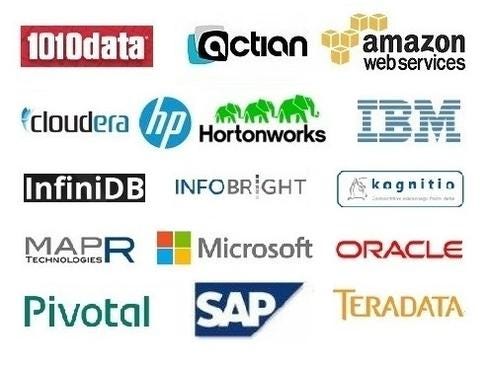Real-Time Analytics At Work Inside Telcos
What can real-time analytics reveal? A mobile provider in New York City recently realized that 10% of its capacity was being consumed by a single application.


16 Top Big Data Analytics Platforms
16 Top Big Data Analytics Platforms (Click image for larger view and slideshow.)
Much of the discussion on big data centers focuses on effective ways to store growing volumes of digital information. But, of course, size isn't everything.
"It's not just the fact that there's big data, it's what you do with it. If you have that insight and don't act on it, then it's wasted effort," IBM predictive analytics expert Richard Rodts told InformationWeek a year ago.
Indeed, one of the business world's concerns is exactly how to convert all those bits into workable strategies, the practicable intelligence required to justify an investment in big data. According to Anukool Lakhina, founder of big data analytics firm Guavus, real-time analytics can provide the catalyst needed to achieve that ROI.
"I hope to see more conversation around the value of big data versus the size of big data," said Lakhina in a phone interview with InformationWeek.
The Silicon Valley-based Guavus sells big data software that helps businesses, mostly telecom companies, analyze "live" data, an approach that promises faster insights than the traditional store-first, analyze-later method. It counts seven of the top 10 US cable operators, and three of the top four US mobile carriers, as its customers, said Lakhina, who in addition to founding Guavus eight years ago also serves as the company's executive VP of strategy.
[Looking for a big data job? Read Big-Data Hiring: 5 Facts From The Field.]
The technology behind Guavus's real-time analytics emerged from Lakhina's PhD work more than a decade ago. "It goes back to a science project that was done at Sprint Advanced Technology Labs," he told us. The project's main goal was to help Sprint take incoming data on its mobile subscribers and continuously analyze it, thereby enabling the carrier to make timelier decisions for a range of use cases, including network security, engineering, customer support, and marketing.
"Sprint had a very audacious idea 10 to 12 years ago to instrument their network with very sophisticated data probes and collection devices. The idea was that once they could collect all this data, they could get improved operational intelligence for difference business functions."
Not only did the project help Lakhina earn his PhD, it created the technical foundation for Guavus.
"We realized that the traditional approach of taking data and moving it to a central place to store it, and then ask questions about it, would not work. You had to take a different approach. The centralized, store-first model wasn't the right way to solve this problem. One had to take an analyze-first, distributed approach."
Real-time analysis is playing an increasingly important role in data-driven enterprises, particularly in the telecom market, said Lakhina.
"On the network engineering side, one of the challenges that all mobile operators have with the advent of the smartphone is that they're seeing unprecedented demands on their networks. It's very difficult for them to engineer and plan their networks to provide the optimal quality of service."
Analytics tools from startups like Guavus -- as well as much larger players like IBM -- give mobile carriers up-to-the-minute visibility on exactly what devices are consuming content on their networks, and where the congestion is.
Lakhina provided this example: A mobile provider in New York City recently realized that 10% of its capacity was being consumed by a single application.
"It turned out the application belonged to a taxi cab company," said Lakhina. "If you've been inside a New York taxi, you'll know they have these live video news streams. This company had taken the credit card transaction application and rejiggered it to carry live streams."
Customer service reps also benefit from real-time analytics, which enables them to quickly determine why mobile subscribers exceed their data plan limits, added Lakhina.
Engage with Oracle president Mark Hurd, NFL CIO Michelle McKenna-Doyle, General Motors CIO Randy Mott, Box founder Aaron Levie, UPMC CIO Dan Drawbaugh, GE Power CIO Jim Fowler, and other leaders of the Digital Business movement at the InformationWeek Conference and Elite 100 Awards Ceremony, to be held in conjunction with Interop in Las Vegas, March 31 to April 1, 2014. See the full agenda here.
About the Author
You May Also Like






